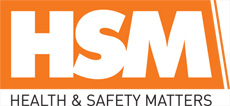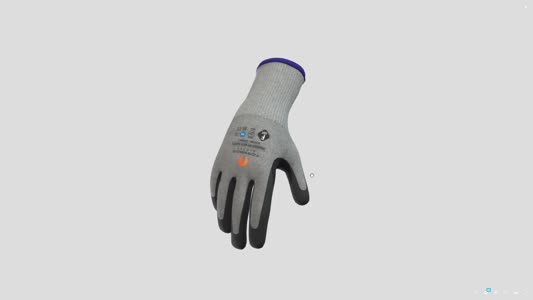
 |
Mark Sennett
Managing Editor |
 |
Kelly Rose
Editor |
| Home> | Industry Update | >Company News | >Are they qualified? |
ARTICLE
Are they qualified?
23 January 2013
The BSIF explains why looking for a qualification is not always enough There has been much debate and deliberation recently on the awaited government review into health and safety being carried out by Lord Young. This

The BSIF explains why looking for a qualification is not always enough
There has been much debate and deliberation recently on the awaited government review into health and safety being carried out by Lord Young. This process in itself has led to a call for proper accreditation of safety consultants through a nationally recognised scheme. However, some have questioned the need for this when there are already a plethora of health and safety qualifications available.
The British Safety Industry Federation (BSIF) supports this call for proper accreditation and is keen to ensure that employers understand the difference between a qualification and accreditation. A qualification is awarded to recognise a level of knowledge, however can also be given simply based on course attendance. In the health and safety market there is a high standard of training and qualification providers, however delegates will still only be tested to prove they have a knowledge and understanding of the subject e.g. theory based only and the qualification itself does not prove they can action what they have learnt in a workplace environment. Accreditation on the other hand tests and proves an appropriate level of knowledge and competence.
This difference is crucial to employers who rely on hiring a professional to carry out services for which they may not be able to employ a dedicated person. This is especially prevalent within the SME sector. In this situation it is important employers have some of sort of yard stick to evaluate that they will be given trustworthy advice and have confidence in the person they are employing. However there have been cases of people being badly serviced by so called health and safety specialists.
Therefore the question is how do these employers choose a suitable candidate to help them comply with their health and safety responsibilities? Initially, as in most areas, most employers would start by looking for a suitable qualification. But in the area of health and safety is this enough to judge the person and their ability to carry out the service offered in a competent manner? As outlined, the possession of a qualification may prove knowledge but does not necessarily prove the ability to carry out the service required. A qualification alone would not give a true measure of ability or an accurate understanding of past responsibilities.
Therefore it is essential when employing the service of a professional that as well as asking for an appropriate qualification, employers should also look for evidence that the service provider can carry out the task they are employed to do.
It is vital that employers are using appropriate people who can carry out the required service and apply any relevant qualification to the task in hand. This is where a proper accreditation scheme is essential so that employers are able to easily find an appropriately qualified and competent provider who they could trust to deliver the service required.
The BSIF has experienced this dilemma first hand in relation to fit testers of respiratory protective equipment (RPE).
Originally fit testers had not been accredited, making the selection of a competent person a matter of luck. It was hard to judge the level of knowledge, skill, experience and understanding of fit testing or know whether these may have deteriorated over time. Either way if the fitter is not competent and poor advice is given, the wearer could have ill fitting equipment putting them at potential risk of respiratory health problems.
To tackle this issue, the BSIF developed a competency scheme in collaboration with the HSE and other industry stakeholders - the BSIF Fit2Fit Fit Test Providers Accreditation Scheme.
Designed to confirm the competency of any person performing facepiece fit testing, delegates initially have to pass an industry recognised exam which demonstrates that they have a thorough knowledge of the HSE guidance on fit testing. Then they will need to pass a practical demonstration of their ability to carry out fit testing to become accredited.
Qualification versus accreditation David Lummis, CEO, BSIF comments: "Many people do not realise the difference between a qualification and accreditation.
In the case of Fit2Fit, by creating a nationally recognised accreditation scheme with 'professional' standing, employers can select appropriate, accredited Fit2Fit personnel to fit test their employees with respiratory protection. This will mitigate their liability in the event of an incident and HSE inspectors and RPE users can be provided with evidence of competence. Ultimately, of course, it will play a part in reducing respiratory disease in the workplace." Over the years a formal programme of accreditation for health and safety consultants has been discussed and is now even more in the spotlight in advance of Lord Young's report. The BSIF is strongly of the view that such an accreditation should be put in place. This will ensure businesses that rely on outside services and are looking for help receive relevant, sound advice on health and safety, ultimately helping them to ensure the safety of their workforce.
There has been much debate and deliberation recently on the awaited government review into health and safety being carried out by Lord Young. This process in itself has led to a call for proper accreditation of safety consultants through a nationally recognised scheme. However, some have questioned the need for this when there are already a plethora of health and safety qualifications available.
The British Safety Industry Federation (BSIF) supports this call for proper accreditation and is keen to ensure that employers understand the difference between a qualification and accreditation. A qualification is awarded to recognise a level of knowledge, however can also be given simply based on course attendance. In the health and safety market there is a high standard of training and qualification providers, however delegates will still only be tested to prove they have a knowledge and understanding of the subject e.g. theory based only and the qualification itself does not prove they can action what they have learnt in a workplace environment. Accreditation on the other hand tests and proves an appropriate level of knowledge and competence.
This difference is crucial to employers who rely on hiring a professional to carry out services for which they may not be able to employ a dedicated person. This is especially prevalent within the SME sector. In this situation it is important employers have some of sort of yard stick to evaluate that they will be given trustworthy advice and have confidence in the person they are employing. However there have been cases of people being badly serviced by so called health and safety specialists.
Therefore the question is how do these employers choose a suitable candidate to help them comply with their health and safety responsibilities? Initially, as in most areas, most employers would start by looking for a suitable qualification. But in the area of health and safety is this enough to judge the person and their ability to carry out the service offered in a competent manner? As outlined, the possession of a qualification may prove knowledge but does not necessarily prove the ability to carry out the service required. A qualification alone would not give a true measure of ability or an accurate understanding of past responsibilities.
Therefore it is essential when employing the service of a professional that as well as asking for an appropriate qualification, employers should also look for evidence that the service provider can carry out the task they are employed to do.
It is vital that employers are using appropriate people who can carry out the required service and apply any relevant qualification to the task in hand. This is where a proper accreditation scheme is essential so that employers are able to easily find an appropriately qualified and competent provider who they could trust to deliver the service required.
The BSIF has experienced this dilemma first hand in relation to fit testers of respiratory protective equipment (RPE).
Originally fit testers had not been accredited, making the selection of a competent person a matter of luck. It was hard to judge the level of knowledge, skill, experience and understanding of fit testing or know whether these may have deteriorated over time. Either way if the fitter is not competent and poor advice is given, the wearer could have ill fitting equipment putting them at potential risk of respiratory health problems.
To tackle this issue, the BSIF developed a competency scheme in collaboration with the HSE and other industry stakeholders - the BSIF Fit2Fit Fit Test Providers Accreditation Scheme.
Designed to confirm the competency of any person performing facepiece fit testing, delegates initially have to pass an industry recognised exam which demonstrates that they have a thorough knowledge of the HSE guidance on fit testing. Then they will need to pass a practical demonstration of their ability to carry out fit testing to become accredited.
Qualification versus accreditation David Lummis, CEO, BSIF comments: "Many people do not realise the difference between a qualification and accreditation.
In the case of Fit2Fit, by creating a nationally recognised accreditation scheme with 'professional' standing, employers can select appropriate, accredited Fit2Fit personnel to fit test their employees with respiratory protection. This will mitigate their liability in the event of an incident and HSE inspectors and RPE users can be provided with evidence of competence. Ultimately, of course, it will play a part in reducing respiratory disease in the workplace." Over the years a formal programme of accreditation for health and safety consultants has been discussed and is now even more in the spotlight in advance of Lord Young's report. The BSIF is strongly of the view that such an accreditation should be put in place. This will ensure businesses that rely on outside services and are looking for help receive relevant, sound advice on health and safety, ultimately helping them to ensure the safety of their workforce.
MORE FROM THIS COMPANY
- PPE buyers urged to Check-Select-Protect
- Striving for greater competency
- BSIF's RSSS named as finalist in OPSS Awards
- Are you certain it's safe?
- Webinar Content
- Legislation update: BSIF members liaise with UK Government on proposed PPE Regulation
- BSIF names Alan Murray as new Chief Executive Officer
- The Health & Safety Event 2021
- HSE Bulletin on Ear Looped Masks
- BSIF and sustainability
OTHER ARTICLES IN THIS SECTION























